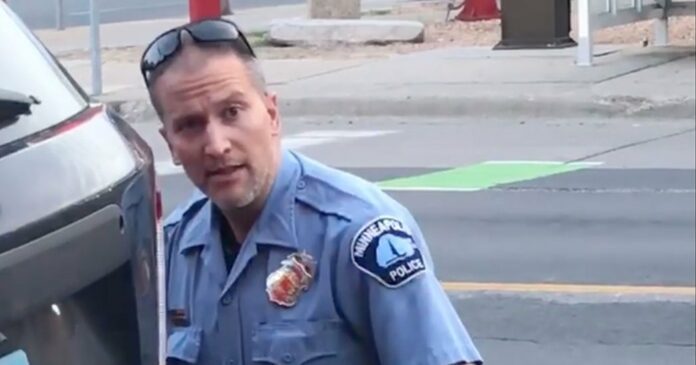A document by prosecutors details how Mr. Chauvin, a former Minneapolis police officer, interacted with George Floyd before his death. Third-degree murder does not require an intent to kill.

The former Minneapolis police officer charged in the death of George Floyd held his knee to Mr. Floyd’s neck for nearly nine minutes, including for two minutes and 53 seconds after Mr. Floyd became unresponsive, according to a document released by prosecutors on Friday.
The document, a statement of probable cause, was used to support a third-degree murder and second-degree manslaughter charges against the former officer, Derek Chauvin. The charges carry a combined maximum sentence of 35 years in prison.
The probable cause statement also said that preliminary results from an autopsy “revealed no physical findings that support a diagnosis of traumatic asphyxia or strangulation,” adding that Mr. Floyd had coronary artery disease and hypertensive heart disease. “The combined effects of Mr. Floyd being restrained by the police, his underlying health conditions and any potential intoxicants in his system likely contributed to his death,” the statement said.
Mr. Floyd’s family released a statement on Friday saying the charges did not go far enough: “We expected a first-degree murder charge. We want a first-degree murder charge.”
A first- or second-degree charge would require prosecutors to prove that Mr. Chauvin intended to kill Mr. Floyd, said Richard Frase, a professor of criminal law at the University of Minnesota. He said the criminal complaint against Mr. Chauvin did not identify any specific motive for officers to kill Mr. Floyd, which essentially ruled out stronger murder charges.
Third-degree murder does not require an intent to kill, according to the Minnesota statute, only that the perpetrator caused someone’s death in a dangerous act “without regard for human life.” Second-degree manslaughter requires prosecutors to prove that Mr. Chauvin was so negligent as to create an “unreasonable risk,” and consciously took the chance that his actions would cause Mr. Floyd to be severely harmed or die.
Professor Frase said the case against Mr. Chauvin appeared to be even stronger than the one brought against Mr. Noor, who was convicted of third-degree murder and second-degree manslaughter.
In that case, Professor Frase said, the officer had seemingly panicked and fired a single shot. “There’s a question of whether he even had time to be reckless,” he said, referring to Mr. Noor. “Here, there’s eight minutes.”
The statement, which was written by Michelle M. Frascone, a special agent of the Minnesota Bureau of Criminal Apprehension, also describes how officers, including Mr. Chauvin, had come in contact with Mr. Floyd on Monday evening after responding to a report of someone trying to make a purchase at a store with a fake $20 bill.
Two officers approached Mr. Floyd, a former high school sports star who worked as a bouncer at a restaurant in Minneapolis, as he sat in a car not far from the store, the probable cause statement said. Mr. Floyd, who was in a car with two other people, was ordered out and arrested. But when the officers began to move him toward a squad car, he “stiffened up, fell to the ground, and told the officers he was claustrophobic,” the statement issued by prosecutors said.
When two other officers arrived, including Mr. Chauvin, the officers “made several attempts to get Mr. Floyd in the back seat” of a squad car, while Mr. Floyd “struggled with the officers by intentionally falling down, saying he was not going in the car, and refusing to stand still,” the statement said.
While still standing, Mr. Floyd began to say he could not breathe, the document said.
Around 8:19 p.m., Mr. Chauvin placed his knee onto Mr. Floyd’s neck area, holding him on the ground while another officer held his legs. At times, Mr. Floyd pleaded, saying, “I can’t breathe,” “please” and “mama.”
“You are talking fine,” the officers said as Mr. Floyd moved back and forth on the ground, according to the probable cause statement.
At 8:24 p.m., Mr. Floyd grew still, the statement said. A minute later, one of the other officers checked his wrist for a pulse but could not find one. Mr. Chauvin continued to hold his knee down on Mr. Floyd’s neck until 8:27, according to the statement.







